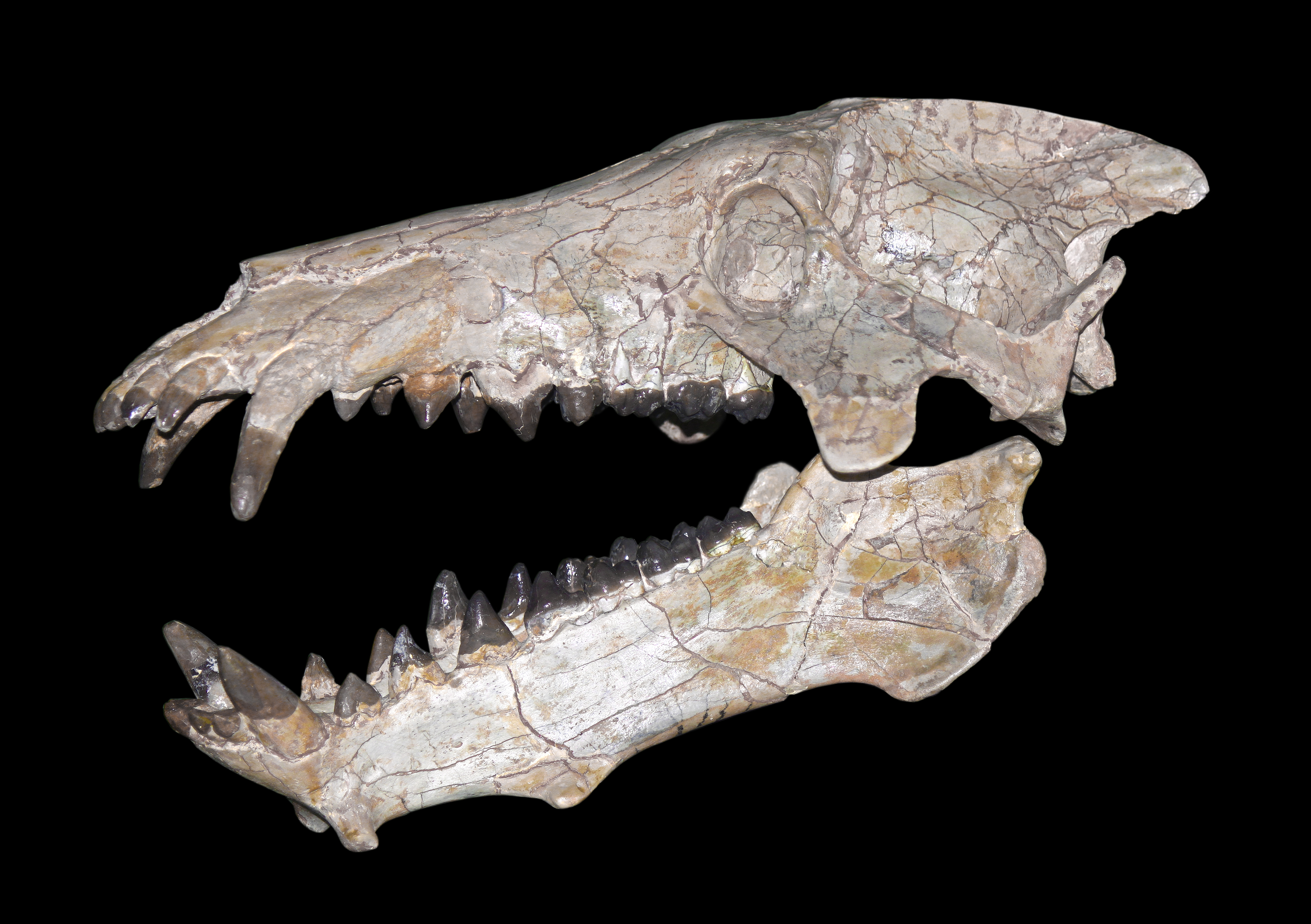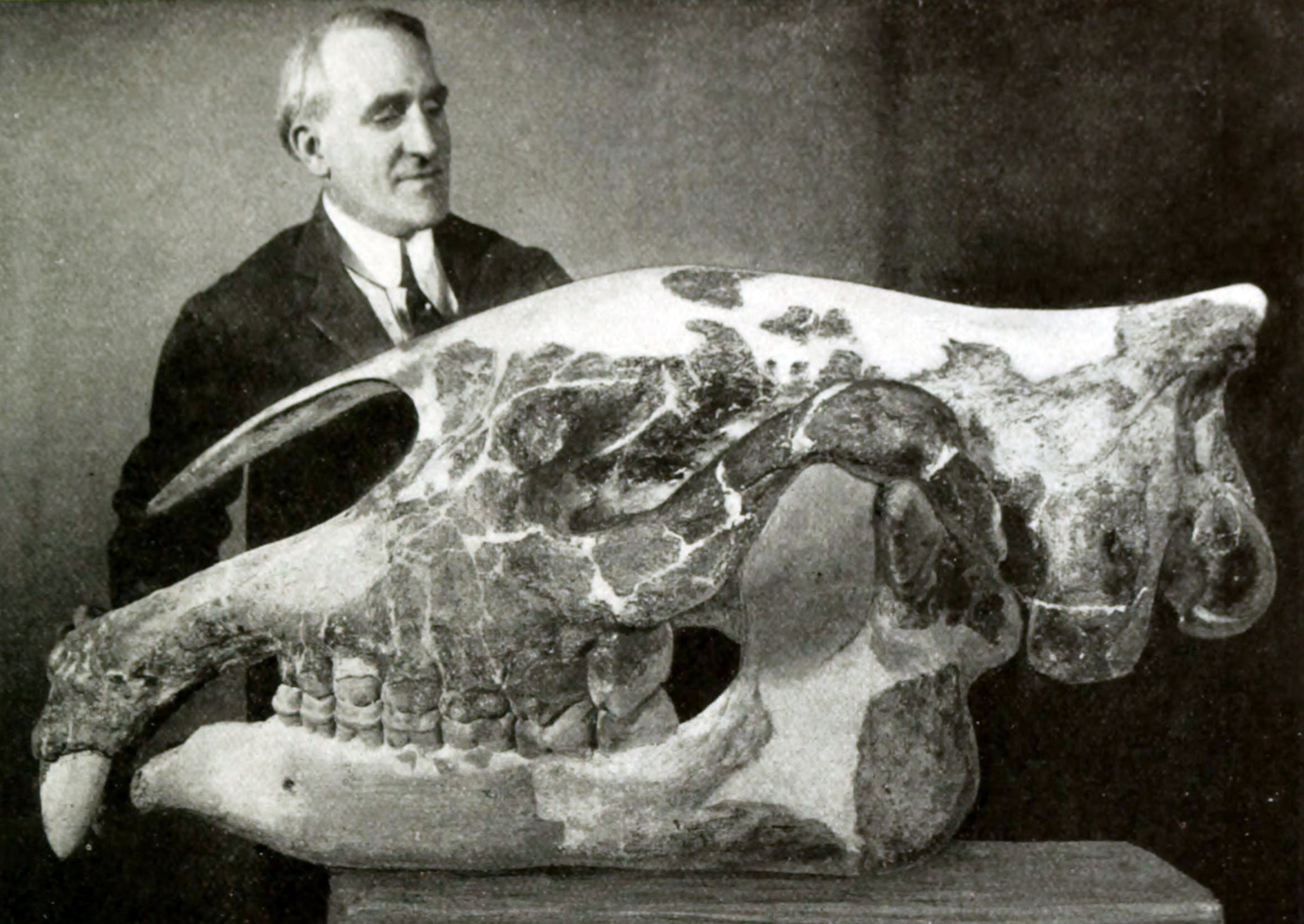|
Paraentelodon
''Paraentelodon'' is an extinct entelodont from the Late Oligocene and Oligocene-Miocene boundary of Asia. The fossils of the type species ''P. intermedium'' were found in Georgia, Kazakhstan and China. An indeterminate species represents in Bugti Hills which is the late Oligocene of Pakistan.G. Métais, P.-O. Antoine, L. Marivaux, J.-L. Welcomme, and S. Ducrocq. 2003New artiodactyl ruminant mammal from the late Oligocene of Pakistan Acta Palaeontologica Polonica 48(3):375-382 Discovery and naming ''Paraentelodon'' was named by L. K. Gabunia in 1964 basing on molars and canine teeth that were found in Oligocene sites of Benara, Georgia (Georgian SSR at the time of discovery). It was assigned to Entelodontidae by Carroll (1988). In 1996 Lucas and Emry found ''Neoentelodon'' to be synonymous with ''Paraentelodon''. Although Gabunia did not explain the etymology, the name ''Paraentelodon'' is derived from the Greek ''para''/παρα "beside" or "near", ἐντελής ente ... [...More Info...] [...Related Items...] OR: [Wikipedia] [Google] [Baidu] |
Entelodont
Entelodontidae, the entelodonts, are an extinct family of pig-like artiodactyls (even-toed ungulates) which inhabited the Northern Hemisphere (Asia, Europe, and North America) from the late Eocene to the Middle Miocene epochs, about 38-19 million years ago. Their large heads, low snouts, narrow gait, and proposed omnivorous diet inspires comparisons to suids (true pigs) and tayassuids (peccaries), and historically they have been considered closely related to these families purely on a morphological basis. However, studies which combine morphological and molecular (genetic) data on artiodactyls instead suggest that entelodonts are cetancodontamorphs, more closely related to hippos and cetaceans than to pigs or other ungulates. Description Entelodonts could get quite large, and in many cases are the largest mammals in their respective ecosystems. The largest entelodont known from a complete skeleton was ''Daeodon'', a North American entelodont which could reach an estimate ... [...More Info...] [...Related Items...] OR: [Wikipedia] [Google] [Baidu] |
Entelodonts
Entelodontidae, the entelodonts, are an extinct family of pig-like artiodactyls (even-toed ungulates Ungulates ( ) are members of the diverse clade Ungulata which primarily consists of large mammals with hooves. These include odd-toed ungulates such as horses, rhinoceroses, and tapirs; and even-toed ungulates such as cattle, pigs, giraffes, cam ...) which inhabited the Northern Hemisphere (Asia, Europe, and North America) from the late Eocene to the Middle Miocene Epoch, epochs, about 38-19 million years ago. Their large heads, low snouts, narrow gait, and proposed Omnivore, omnivorous diet inspires comparisons to Suidae, suids (true pigs) and Tayassuid, tayassuids (peccaries), and historically they have been considered closely related to these families purely on a Morphology (biology), morphological basis. However, studies which combine morphological and Molecular genetics, molecular (genetic) data on artiodactyls instead suggest that entelodonts are Cetancodontamorpha, ceta ... [...More Info...] [...Related Items...] OR: [Wikipedia] [Google] [Baidu] |
Daeodon
''Daeodon'' is an extinct genus of entelodont even-toed ungulates that inhabited North America about 23 to 20 million years ago during the latest Oligocene and earliest Miocene. The type species is ''Daeodon shoshonensis'', described by a very questionable holotype by Cope. Some authors synonimize it with ''Dinohyus hollandi'' and several other species (see below), but due to the lack of diagnostic material, this is questionable at best. Another large member of this family, similar in size to ''Daeodon'', is the Asian '' Paraentelodon,'' but it is known by very incomplete material. Taxonomy The genus ''Daeodon'' was erected by the American anatomist and paleontologist Edward Drinker Cope in 1878. He classified it as a perissodactyl and thought that it was closely related to ''Menodus''. This classification persisted until the description of ''"Elotherium" calkinsi'' in 1905, a very similar and much more complete animal from the same rocks, which was promptly assigned as ... [...More Info...] [...Related Items...] OR: [Wikipedia] [Google] [Baidu] |
Entelodon
''Entelodon'' (meaning "complete teeth", from Ancient Greek ''entelēs'' "complete" and ''odōn'' "tooth", referring to its "complete" eutherian dentition), is an extinct genus of entelodont artiodactyl endemic to Eurasia. Fossils of species are found in Paleogene strata ranging in age from the Houldjinian (37.2–33.9 mya) until the Rupelian epoch of the early Oligocene (33.9–28.4 mya). Taxonomy It is one of four entelodont genera native to Eurasia, the other three being the primitive '' Eoentelodon'' of late Eocene China, '' Proentelodon'' of middle Eocene Mongolia and the gigantic ''Paraentelodon'' of mid to late Oligocene Central Asia. Description ''Entelodon'' was a fairly typical entelodont, with a large, bulky body, slender legs, and a long snout. Like other entelodonts, ''Entelodon'' had complete eutherian dentition (3 incisors, 1 canine, 3 premolars, and 3 molars per quadrant). It had only two toes on each foot, and its legs were built for fast running.Agustí ... [...More Info...] [...Related Items...] OR: [Wikipedia] [Google] [Baidu] |
Oligocene
The Oligocene ( ) is a geologic epoch of the Paleogene Period and extends from about 33.9 million to 23 million years before the present ( to ). As with other older geologic periods, the rock beds that define the epoch are well identified but the exact dates of the start and end of the epoch are slightly uncertain. The name Oligocene was coined in 1854 by the German paleontologist Heinrich Ernst Beyrich from his studies of marine beds in Belgium and Germany. The name comes from the Ancient Greek (''olígos'', "few") and (''kainós'', "new"), and refers to the sparsity of extant forms of molluscs. The Oligocene is preceded by the Eocene Epoch and is followed by the Miocene The Miocene ( ) is the first geological epoch of the Neogene Period and extends from about (Ma). The Miocene was named by Scottish geologist Charles Lyell; the name comes from the Greek words (', "less") and (', "new") and means "less recent" ... Epoch. The Oligocene is the third and final epoch of ... [...More Info...] [...Related Items...] OR: [Wikipedia] [Google] [Baidu] |
Oligocene Mammals Of Asia
The Oligocene ( ) is a geologic epoch of the Paleogene Period and extends from about 33.9 million to 23 million years before the present ( to ). As with other older geologic periods, the rock beds that define the epoch are well identified but the exact dates of the start and end of the epoch are slightly uncertain. The name Oligocene was coined in 1854 by the German paleontologist Heinrich Ernst Beyrich from his studies of marine beds in Belgium and Germany. The name comes from the Ancient Greek (''olígos'', "few") and (''kainós'', "new"), and refers to the sparsity of extant forms of molluscs. The Oligocene is preceded by the Eocene Epoch and is followed by the Miocene Epoch. The Oligocene is the third and final epoch of the Paleogene Period. The Oligocene is often considered an important time of transition, a link between the archaic world of the tropical Eocene and the more modern ecosystems of the Miocene. Major changes during the Oligocene included a global expansion of ... [...More Info...] [...Related Items...] OR: [Wikipedia] [Google] [Baidu] |
Oligocene Even-toed Ungulates
The Oligocene ( ) is a geologic epoch (geology), epoch of the Paleogene Geologic time scale, Period and extends from about 33.9 million to 23 million years before the present ( to ). As with other older geologic periods, the rock beds that define the epoch are well identified but the exact dates of the start and end of the epoch are slightly uncertain. The name Oligocene was coined in 1854 by the German paleontologist Heinrich Ernst Beyrich from his studies of marine beds in Belgium and Germany. The name comes from the Ancient Greek (''olígos'', "few") and (''kainós'', "new"), and refers to the sparsity of Neontology, extant forms of Mollusca, molluscs. The Oligocene is preceded by the Eocene Epoch and is followed by the Miocene Epoch. The Oligocene is the third and final epoch of the Paleogene Period. The Oligocene is often considered an important time of transition, a link between the archaic world of the tropical Eocene and the more modern ecosystems of the Miocene. Major ... [...More Info...] [...Related Items...] OR: [Wikipedia] [Google] [Baidu] |
Gomphotherium
''Gomphotherium'' (; "welded beast") is an extinct genus of proboscids from the Neogene and early Pleistocene of Eurasia, Africa, North America and Asia. As of 2021, two species, ''G. annectens'' and possibly ''G. subtapiroideum'', are also known from North Korea. Description Most species of ''Gomphotherium'' were similar in size to the Asian elephant, with ''G. productum'' (known from a 35-year-old male) measuring tall and weighing . The largest species ''G. steinheimense'', known from a complete 37-year-old male found in Mühldorf, Germany, measured up to tall and weighed . It had four tusks, two on the upper jaw and two on the elongated lower jaw. The lower tusks are parallel and shaped like a shovel and were probably used for digging up food from mud. Unlike modern elephants, the upper tusks were covered by a layer of enamel. Compared to elephants, the skull was more elongated and low, indicating that the animal had a short trunk with poor flexibility. These anima ... [...More Info...] [...Related Items...] OR: [Wikipedia] [Google] [Baidu] |
Bovidae
The Bovidae comprise the biological family of cloven-hoofed, ruminant mammals that includes cattle, bison, buffalo, antelopes, and caprines. A member of this family is called a bovid. With 143 extant species and 300 known extinct species, the family Bovidae consists of 11 (or two) major subfamilies and thirteen major tribes. The family evolved 20 million years ago, in the early Miocene. The bovids show great variation in size and pelage colouration. Excepting some domesticated forms, all male bovids have two or more horns, and in many species, females possess horns, too. The size and shape of the horns vary greatly, but the basic structure is always one or more pairs of simple bony protrusions without branches, often having a spiral, twisted or fluted form, each covered in a permanent sheath of keratin. Most bovids bear 30 to 32 teeth. Most bovids are diurnal. Social activity and feeding usually peak during dawn and dusk. Bovids typically rest before dawn, during mi ... [...More Info...] [...Related Items...] OR: [Wikipedia] [Google] [Baidu] |
Anthracotherium
''Anthracotherium'' (from el, ἄνθραξ , 'coal' and el, θηρίον 'beast') was a genus of extinct artiodactyl ungulate mammals, characterized by having 44 teeth, with five semi-crescentic cusps on the crowns of the upper molars. The genus ranged from the middle Eocene period until the early Miocene, having a distribution throughout Eurasia. Material subjectively assigned to ''Anthracotherium'' from Pakistan suggests the last species died out soon after the start of the Miocene. Description The genus typifies the family Anthracotheriidae, if only because it is the most thoroughly studied. In many respects, especially the anatomy of the lower jaw, ''Anthracotherium'', as with the other members of the family, is allied to the hippopotamus, of which it is probably an ancestral form. Anthracotheres, together with hippos, are grouped with cetaceans in the clade Whippomorpha. Etymology The genus name stems from the fact that the holotype and other first specimens were ori ... [...More Info...] [...Related Items...] OR: [Wikipedia] [Google] [Baidu] |
Paraceratherium Bugtiense
''Paraceratherium'' is an extinct genus of hornless rhinoceros. It is one of the largest terrestrial mammals that has existed and lived from the early to late Oligocene epoch (34–23 million years ago). The first fossils were discovered in what is now Pakistan, and remains have been found across Eurasia between China and the Balkans. It is classified as a member of the family Paraceratheriidae. ''Paraceratherium'' means "near the hornless beast", in reference to ''Aceratherium'', the genus in which the type species ''P. bugtiense'' was originally placed. The exact size of ''Paraceratherium'' is unknown because of the incompleteness of the fossils. The shoulder height was about , and the length about . Its weight is estimated to have been about . The long neck supported a skull that was about long. It had large, tusk-like incisors and a nasal incision that suggests it had a prehensile upper lip or proboscis (trunk). The legs were long and pillar-like. The lifestyle of '' ... [...More Info...] [...Related Items...] OR: [Wikipedia] [Google] [Baidu] |

.jpg)





